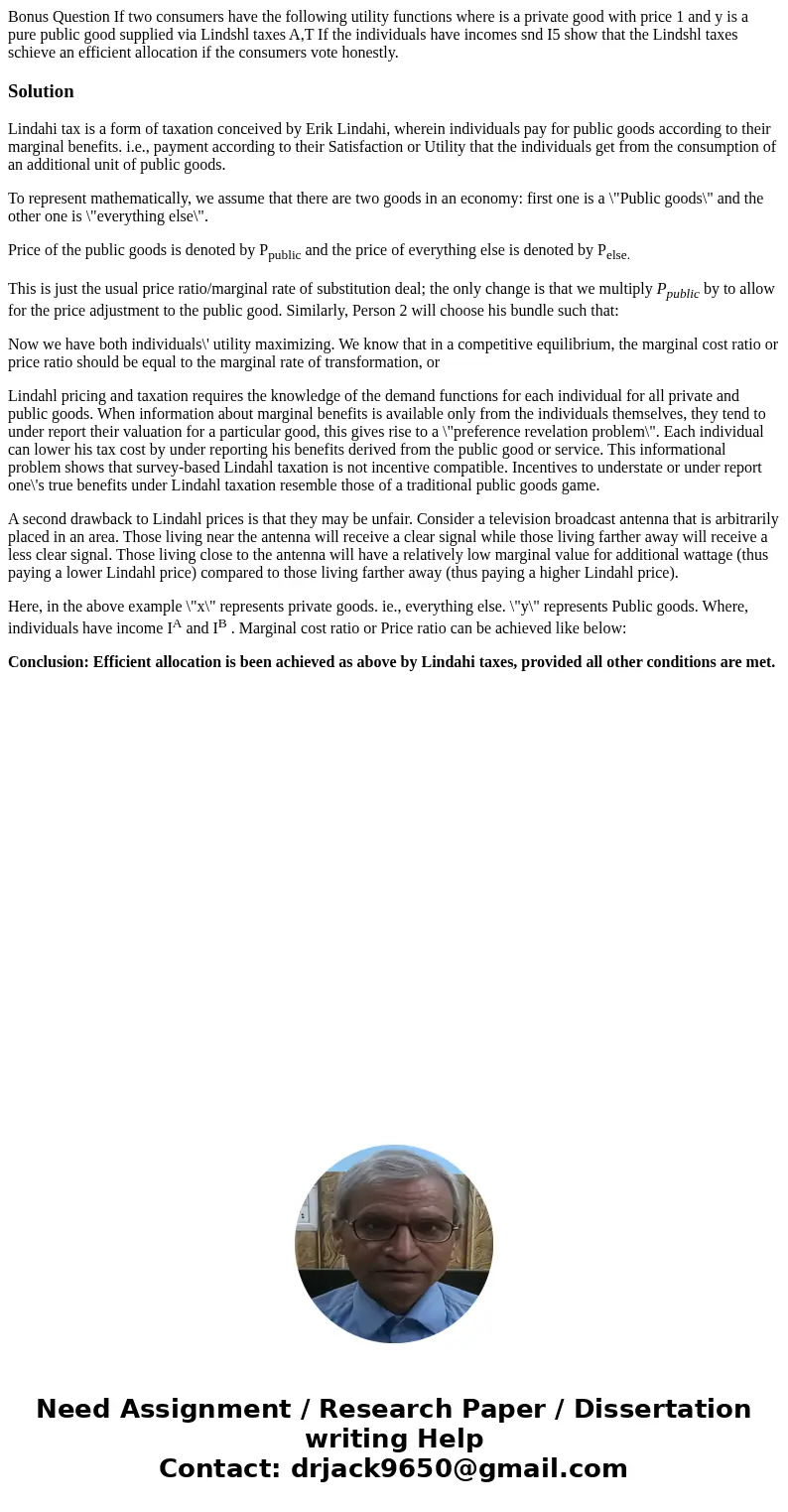Bonus Question If two consumers have the following utility f
Solution
Lindahi tax is a form of taxation conceived by Erik Lindahi, wherein individuals pay for public goods according to their marginal benefits. i.e., payment according to their Satisfaction or Utility that the individuals get from the consumption of an additional unit of public goods.
To represent mathematically, we assume that there are two goods in an economy: first one is a \"Public goods\" and the other one is \"everything else\".
Price of the public goods is denoted by Ppublic and the price of everything else is denoted by Pelse.
This is just the usual price ratio/marginal rate of substitution deal; the only change is that we multiply Ppublic by to allow for the price adjustment to the public good. Similarly, Person 2 will choose his bundle such that:
Now we have both individuals\' utility maximizing. We know that in a competitive equilibrium, the marginal cost ratio or price ratio should be equal to the marginal rate of transformation, or
Lindahl pricing and taxation requires the knowledge of the demand functions for each individual for all private and public goods. When information about marginal benefits is available only from the individuals themselves, they tend to under report their valuation for a particular good, this gives rise to a \"preference revelation problem\". Each individual can lower his tax cost by under reporting his benefits derived from the public good or service. This informational problem shows that survey-based Lindahl taxation is not incentive compatible. Incentives to understate or under report one\'s true benefits under Lindahl taxation resemble those of a traditional public goods game.
A second drawback to Lindahl prices is that they may be unfair. Consider a television broadcast antenna that is arbitrarily placed in an area. Those living near the antenna will receive a clear signal while those living farther away will receive a less clear signal. Those living close to the antenna will have a relatively low marginal value for additional wattage (thus paying a lower Lindahl price) compared to those living farther away (thus paying a higher Lindahl price).
Here, in the above example \"x\" represents private goods. ie., everything else. \"y\" represents Public goods. Where, individuals have income IA and IB . Marginal cost ratio or Price ratio can be achieved like below:
Conclusion: Efficient allocation is been achieved as above by Lindahi taxes, provided all other conditions are met.

 Homework Sourse
Homework Sourse